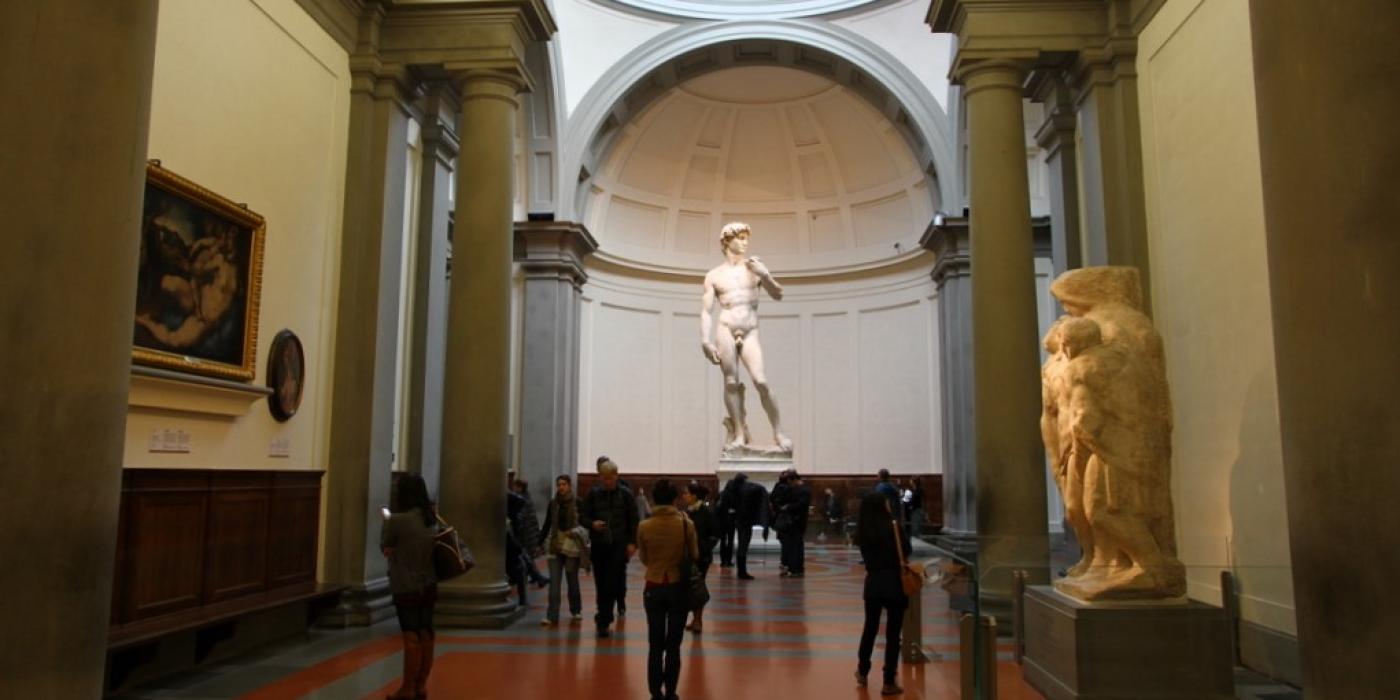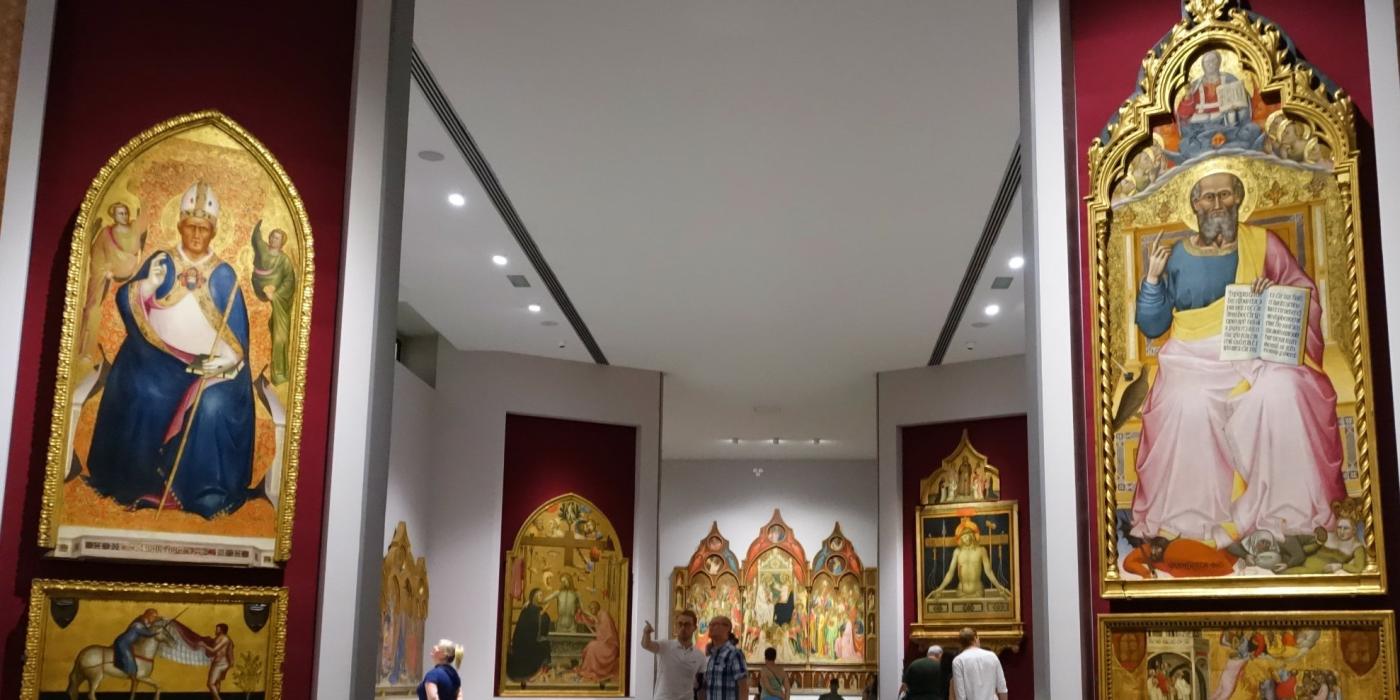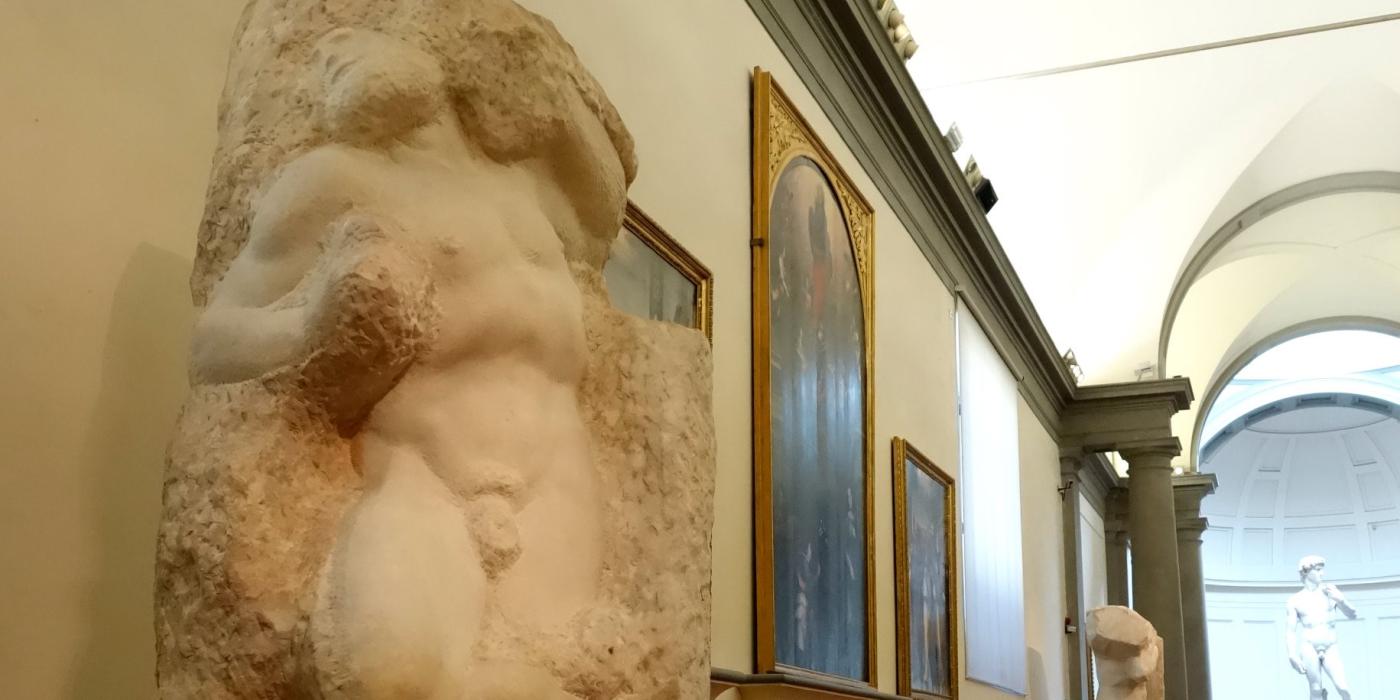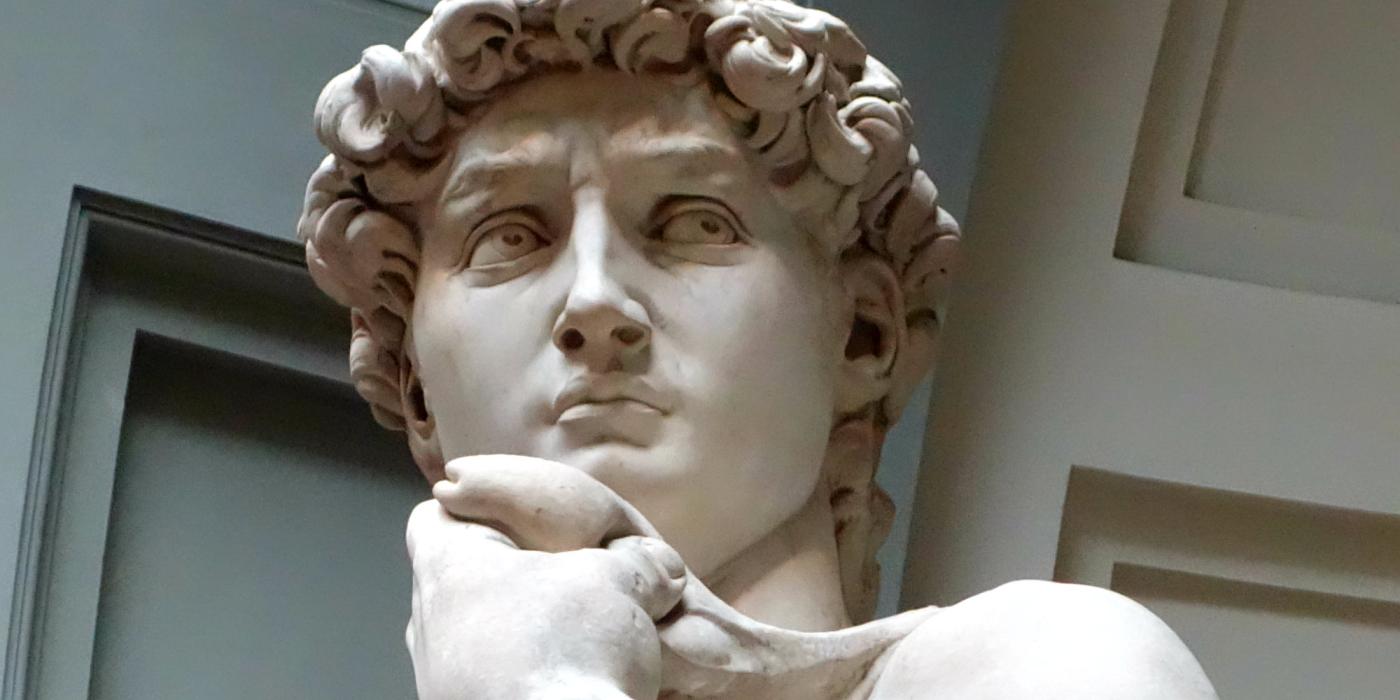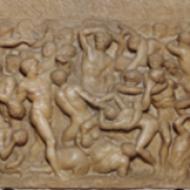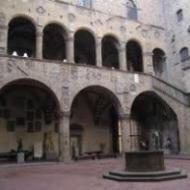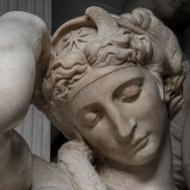The Accademia, or Gallery of the Academy of Florence, originally founded upon the will of Grand Duke Pietro Leopoldo as didactic collection for the students of the Academy of Fine Arts, is one of the most famous museums in the world, with a public that exceeded one million six hundred thousand visitors in 2017. The Gallery preserves and displays extraordinary collections of paintings dating back from the 13th to the 16th century.
Without a doubt the Accademia is mainly famous for the unparalleled series of sculptures by Michelangelo. Star of the museum is Michelangelo’s David, an icon recognised by western society as a universal symbol of artistic beauty. Created by the artist for a location high up on the Duomo of Florence in 1501-4, the original was displayed in front of Palazzo della Signoria (Palazzo Vecchio) until being moved for conservation reasons to a purpose-built “tribune” at the Accademia in 1873. In the gallery leading up to the David, visitors can take in the unfinished Prisoners, originally intended for the tomb of Pope Julius II. Among the artists represented in the collections, there are Giotto di Bondone, the Maestro della Maddalena, Pacino di Buonaguida, Ghirlandaio, Sandro Botticelli, Filippino Lippi, Pietro Perugino, Pontormo, Agnolo Bronzino, Alessandro Allori or Santi di Tito.Unique in its kind, it is the large model in raw earth of The Rape of the Sabine Women by Giambologna, which execution in marble is visible under the Loggia dei Lanzi in Piazza della Signoria. Moreover, the section of musical instruments is of primary historic importance, with a precious set of objects coming from the Medici family.
Without a doubt the Accademia is mainly famous for the unparalleled series of sculptures by Michelangelo. Star of the museum is Michelangelo’s David, an icon recognised by western society as a universal symbol of artistic beauty. Created by the artist for a location high up on the Duomo of Florence in 1501-4, the original was displayed in front of Palazzo della Signoria (Palazzo Vecchio) until being moved for conservation reasons to a purpose-built “tribune” at the Accademia in 1873. In the gallery leading up to the David, visitors can take in the unfinished Prisoners, originally intended for the tomb of Pope Julius II. Among the artists represented in the collections, there are Giotto di Bondone, the Maestro della Maddalena, Pacino di Buonaguida, Ghirlandaio, Sandro Botticelli, Filippino Lippi, Pietro Perugino, Pontormo, Agnolo Bronzino, Alessandro Allori or Santi di Tito.Unique in its kind, it is the large model in raw earth of The Rape of the Sabine Women by Giambologna, which execution in marble is visible under the Loggia dei Lanzi in Piazza della Signoria. Moreover, the section of musical instruments is of primary historic importance, with a precious set of objects coming from the Medici family.
Information:
Address:
via Ricasoli 58/60, 50122 - Firenze, FIPhone:
055 0987100
Access notes:
The last admission is half an hour before closing.
Free admission every 1st Sunday of the month, April 25th, June 2nd, November 4th; priority access suspended.
Booking required. Info on booking the Accademia Gallery entrance: FAQ reservation for the Accademia Gallery
Access for disabled:
Photo gallery
Museum timetables:
Related museums
